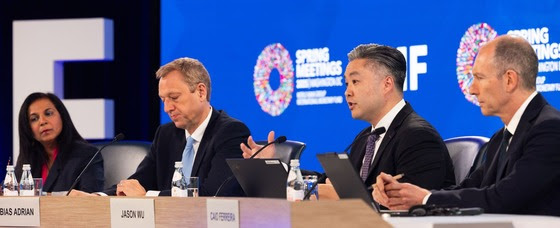Global financial stability risks (GFSR) have increased significantly as global financial conditions tightened and economic and trade policy uncertainty remain elevated, according to Tobias Adrian, director of the International Monetary Fund’s (IMF’s) Monetary and Capital Markets Department.
At the same time, Adrian and the GFSR team pointed out that, despite the increase in volatility and downward trend in prices, market functioning has been normal. “We haven’t seen interventions by central banks, and market interventions have been very orderly,” Adrian said. Some of the repricing is happening after years of strong appreciation, and with price/equity rations still fairly high, he also noted.
Adrian outlined his assessment on Tuesday in a briefing detailing the analysis in the latest Global Financial Stability Report, citing three key forward-looking vulnerabilities:
First, despite recent turmoil, high valuations in some sectors could pull back if the economic outlook worsens. In emerging economies, tightening global financial conditions could weigh on currencies, asset prices, and capital flows.
Second, market volatility could strain financial institutions, especially those with high leverage. Asset managers have deeper links with the banking sector, which raises the risk of some nonbank financial institutions deleveraging if they face margin calls or redemptions.
Third, sovereign bond markets may see more turbulence, especially in countries with high debt levels. Emerging economies, already facing the highest financing costs in a decade, may need to refinance debt and fund government spending at higher costs.
Given these conditions, Adrian said policymakers should prepare for financial instability. That means ensuring market functioning, prudential supervision and regulation of financial institutions, and emergency liquidity and crisis resolution tools, he said. Enditem
Source: Ghana Eye Report
Share Us



